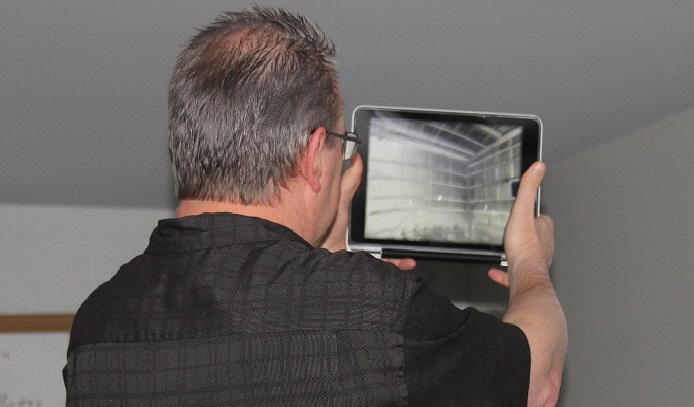WILL COUNTY SHERIFF'S OFFICE STEPS IT UP WITH NEW TECHNOLOGY
The Will County Sheriff’s Crime Scene Investigation Unit and the Traffic Unit now have a new tool for processing scenes. One of only three in the state of Illinois, the Sheriff’s Office purchased a Faro Focus 3-D Laser Scanner to assist our investigators at traffic crashes and crime scenes. Compared to the Total Station, which was a two-man job with only 2-D scanning images and took hours at a scene to scan, the Faro Focus scans in 3-D, is light-weight, compact, is a one man job, and an entire scene can be scanned in less than half the time. The new technology provided by this scanner takes the images and creates a virtual map of the entire area. Measurements between objects are detailed within 2 millimeters and are automatically built in; accident reconstruction is made clear; blood splatter can be measured and becomes more visible; trajectory of bullet paths can be followed with precise accuracy and re-creations of a path a suspect took during the crime can also be developed. The scanner also allows 3-D images in greyscale and in total darkness. It is controlled by a touchscreen and has the capability to be linked to a smartphone or a computer.
Crime Scene Investigator Sgt. Jeremy Zdzinicki, who did the research and spearheaded the proposal stated, “Our main objective is for courtroom trials. It’s a great new tool for law enforcement to build their case and for the State’s Attorneys who prosecute them. This equipment takes the judge and jury right to the scene as if they were there. ”
For the past week, three deputies from the Crime Scene Unit and three deputies from the Traffic Unit have been in the process of a 40 hour training with instructor David Dustin. Dustin is President of Dustin Forensics where the scanner was purchased. Once the courses are complete the scanner will be put to use.
In the future the Sheriff’s Office plans to be pro-active in using the scanner in schools and other high security buildings in Will County in case of an emergency situation. Instead of using the current 2-D blueprints of a building, this could potentially save officers critical time, give them pertinent information and give them an accurate picture of what an area actually looks like before entering it.
Photo 1: Sgt. Jeremy Zdzinicki (blue shirt/tie) with Instructor David Dustin
Photo 2: Dustin showing a virtual scan of a scene
Photo 3: Scan in total darkness
Photo 4: Traffic deputies in training



